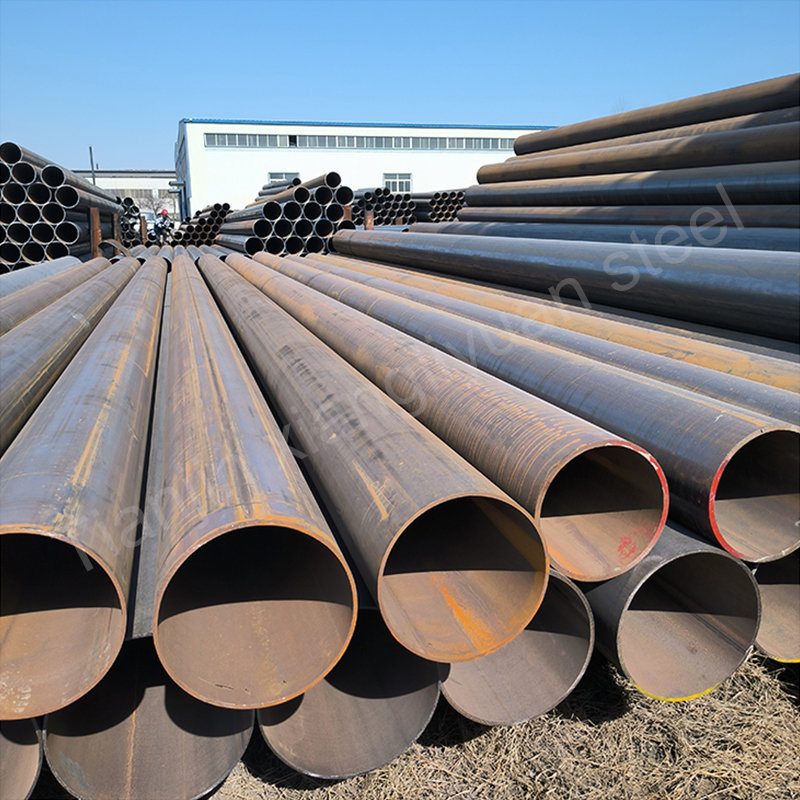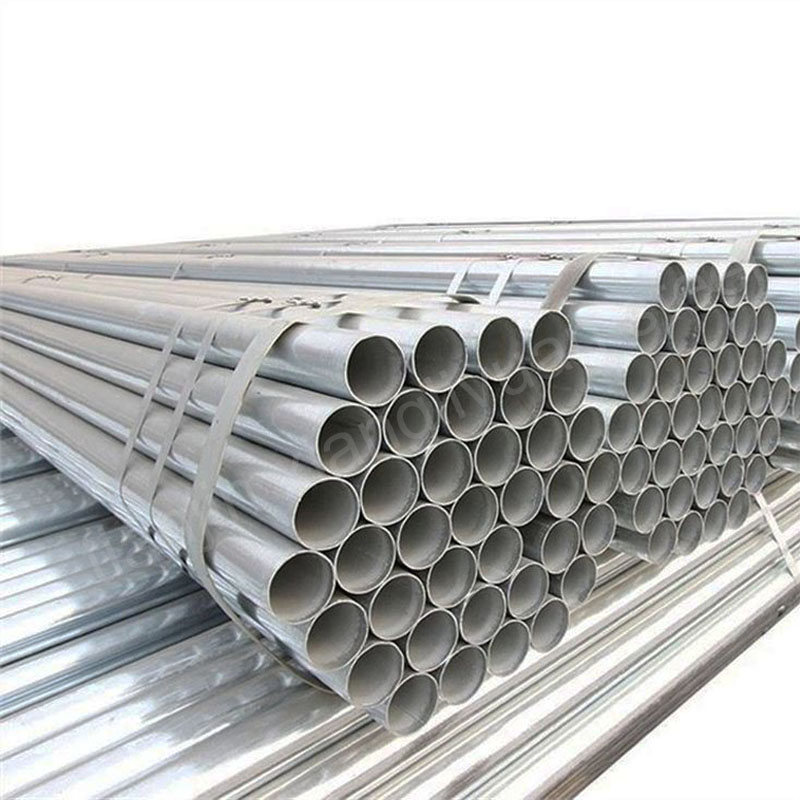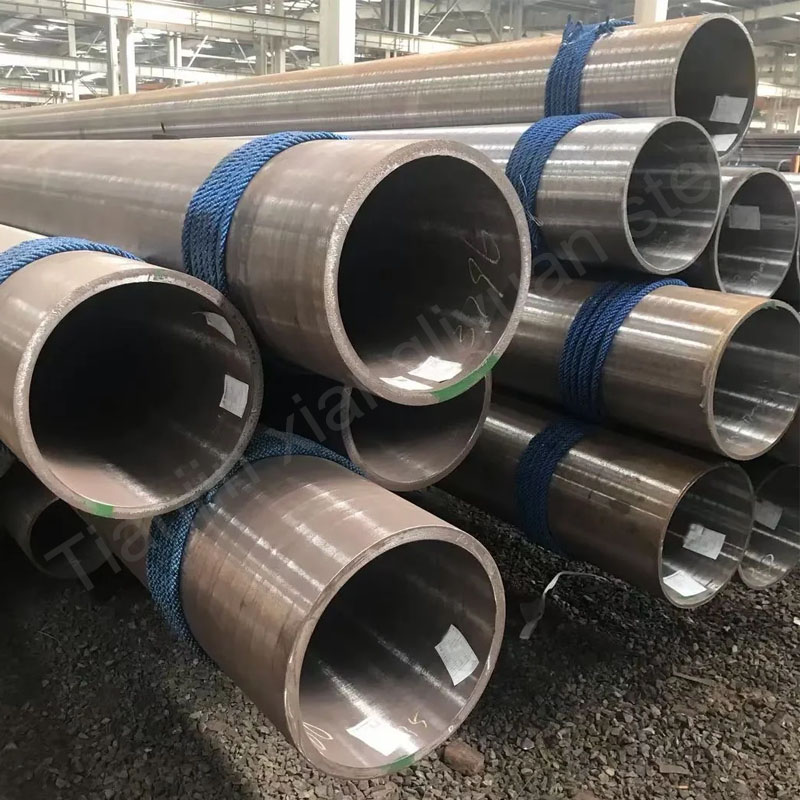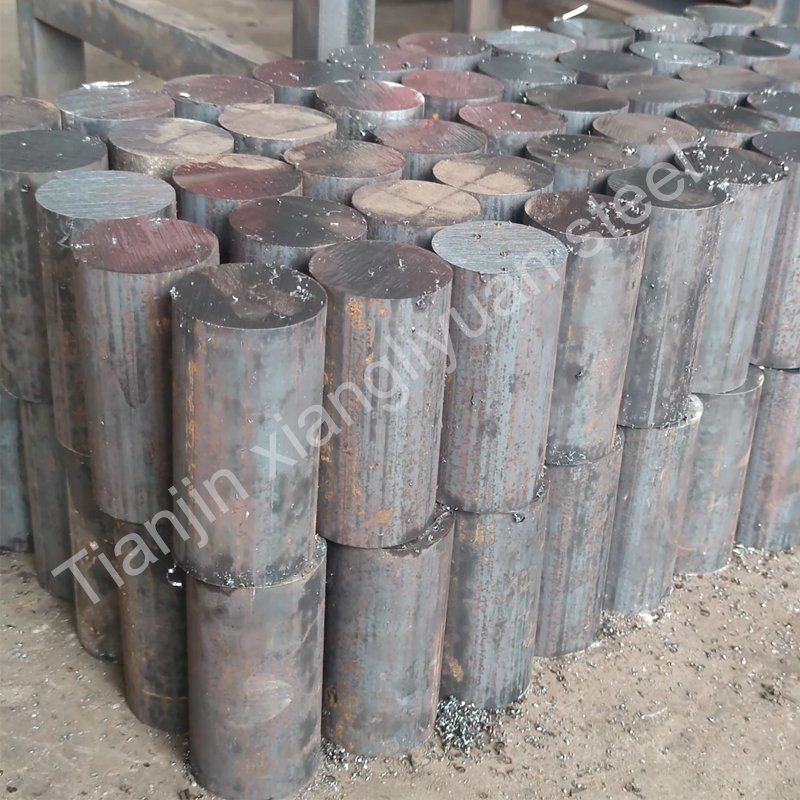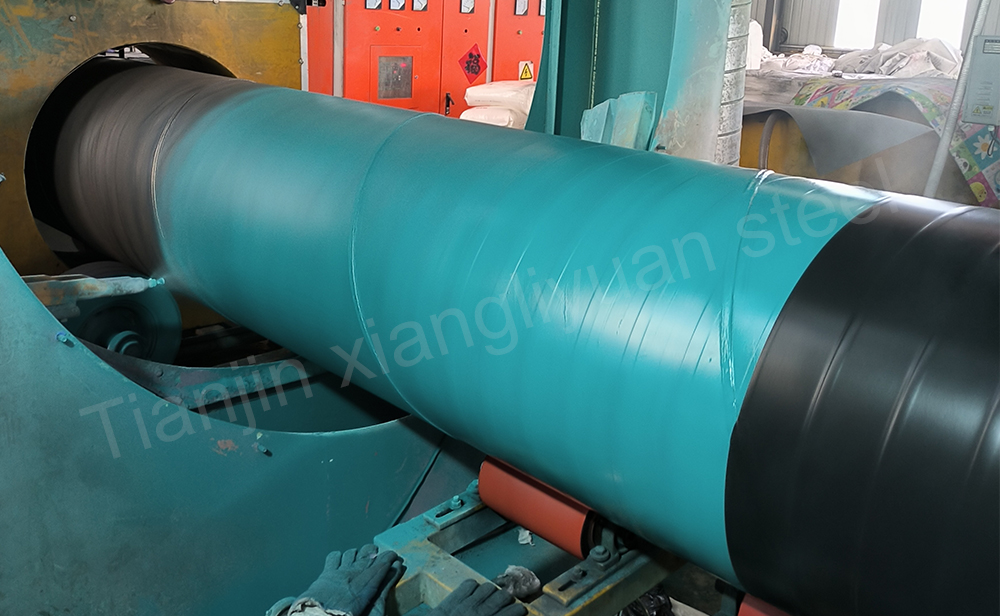Straight seam welded pipe (LSAW) and spiral welded pipe (SSAW) are two common types of welded steel pipes, which are widely used in oil and gas transportation, construction, infrastructure and other fields.
Straight seam welded pipe (LSAW)
Production process
1. Raw materials: steel plate or steel coil.
2. Forming: The steel plate is gradually bent into a round tube shape by JCOE forming method or UOE forming method.
3. Welding: Double-sided submerged arc welding (DSAW) is used for welding to ensure the quality of the weld.
4. Inspection: Non-destructive testing such as ultrasonic flaw detection and radiographic flaw detection is carried out.
Spiral welded pipe (SSAW)
Production process
1. Raw materials: steel coil.
2. Forming: The steel is rolled into a spiral shape by a spiral forming machine.
3. Welding: Double-sided submerged arc welding (DSAW) or high frequency welding (HFW) is used for welding.
4. Inspection: Non-destructive testing such as ultrasonic flaw detection and radiographic flaw detection is carried out.
Standards
– API 5L
– ASTM A252
– EN10219
– GB/T 9711
Steel grade: such as B, X42, X46, X52, X56, X60, X65, X70, etc. in API 5L.
Advantages and disadvantages of straight seam welded pipe
Advantages:
– Short weld, high welding quality, uniform force.
– High production efficiency, suitable for mass production.
– High pipe diameter accuracy and uniform wall thickness.
– Disadvantages:
– For large diameter pipes, the production cost is high.
– Large-sized steel plates are required during the forming process, which is limited by the width of the raw materials.
Advantages and disadvantages of spiral welded pipe
Advantages:
– Simple production process and low cost.
– For large diameter steel pipes, it is not limited by the width of raw materials.
– Longer steel pipes can be produced to reduce the number of joints.
Disadvantages:
– Long weld, more welding defects are possible.
– Uneven force, suitable for low-pressure transmission pipelines.
– The welding quality is relatively low, and the welding process needs to be strictly controlled.
Application of straight seam welded pipes
Long-distance oil and gas pipelines
Urban gas pipelines
Water supply and drainage projects, etc.
Application of spiral welded pipes
Low-pressure transmission pipelines
Bridge piling pipes
Foundation engineering pipelines, etc.
Straight seam welded pipes and spiral welded pipes each have their own characteristics and application scenarios. Straight seam welded pipes are suitable for high-pressure, long-distance transmission pipelines with high weld quality; while spiral welded pipes are suitable for low-pressure transmission pipelines and construction projects due to their low production cost. The choice of which welded pipe should be weighed according to the specific project requirements and economic efficiency.

